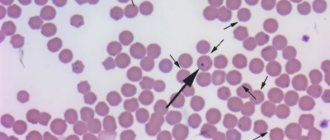Mycoplasmosis is an infectious disease of dogs caused by mycoplasmas and accompanied by damage to the respiratory, genitourinary system, conjunctivitis and the musculoskeletal system.
Mycoplasma itself is a single-celled microorganism, but it cannot be classified as bacteria, viruses or fungi. The surface of mycoplasma is covered with a thin film, which is why they are plastic and sensitive to sudden osmotic changes in the environment, alcohols and various detergents. Mycoplasmas as mycobionts are widely distributed in soil, causing infectious diseases of plants and animals. The dog has Mycoplasma cynos. This mycoplasma parasitizes the mucous membranes of the respiratory tract, gastrointestinal tract and genitourinary system. The nutrition of mycoplasmas in the dog’s body occurs due to the cells to which they attach in one or another part of the body.
The main carriers of mycoplasmas in the environment are rats and mice. At the same time, without getting sick, they themselves infect dogs by airborne droplets or food contaminated by them.
Infection of healthy dogs occurs as a result of contact with a dog sick with mycoplasmosis, through airborne droplets or sexual contact. About 10% of contacted dogs become ill; the rest of the dogs remain in a “dormant” state for the time being.
What it is
Mycoplasmosis is caused by living protozoa mycoplasmas, which are not classified as fungi, bacteria, or viruses. They do not have a specific structure, but are protected by a shell. Outside a living organism, mycoplasmas quickly die, but they are still found in soil, water, and the environment. Despite this, a dog can only become infected from another animal. In small quantities, these parasitic formations are not dangerous, because the immune system can fight them. A weakened body is unable to resist.
Mycoplasmas affect different organs: the respiratory tract, epidermis, genitourinary system, and gastrointestinal tract. When they enter the body, they attach to active healthy cells. The product of their parasitism is gases: ammonia and hydrogen peroxide. They are the ones who poison the dog. Depending on the area affected, the disease causes different symptoms.
Consequences of mycoplasmosis in dogs
When the conjunctiva becomes inflamed against the background of mycoplasmosis in dogs, a secondary infection may occur. For example, with inflammation of the conjunctiva, purulent conjunctivitis often develops. An ophthalmological disease, in the absence of proper treatment, causes visual impairment (cataracts, glaucoma).
A long course of mycoplasma bronchitis is dangerous due to the development of obstructive pulmonary disease.
When the oral cavity is damaged, chronic gingivitis can develop, which in turn becomes the cause of periodontal disease. Due to dental disease, complete or partial loss of teeth occurs.
Mycoplasma arthritis leads to the destruction of cartilage tissue and the formation of erosions on the surface of the joint.
In sick bitches with mycoplasmosis, pregnancy is often terminated and underdeveloped puppies are born. There is also a high mortality rate of offspring in the first days after birth.
Hemotrophic mycoplasmosis, which affects blood cells, causes the development of anemia in animals.
How does infection occur?
Carriers are cats and rats . The disease is not dangerous for them. Large accumulations of pathogenic microorganisms are found in the mucous membranes of the nose, oral cavity, gastrointestinal tract, vaginal secretions, and upper respiratory tract. Therefore, a pet can become infected through indirect or direct contact with a sick animal:
- By airborne droplets;
- From mother to puppies;
- Sexually (during mating);
- Through any organic liquid (plasma).
The disease is also dangerous for humans, however, the microorganisms that cause it in dogs and people are different. Therefore, infection from person to pet and vice versa cannot occur. There are frequent cases when a dog picked up mycoplasmas from domestic rodents (hamsters, rats, mice, chinchillas).
Symptoms
The development of the disease and its symptoms depend on many factors, primarily on the dog’s health and immunity. Animals with strong immunity most often suffer mycoplasmosis asymptomatically, but do not forget that they are also dangerous for surrounding relatives.
There are no special symptoms of the disease - they depend on which system of the body has been infected. Common signs of ill health include:
- increased body temperature;
- weakness;
- loss of appetite;
- apathy.
Additional symptoms can help to correctly diagnose and establish the cause of the infection. If pathogenic microorganisms affect the mucous membrane of the eye, the dog develops conjunctivitis. Veterinarians note unilateral inflammation, when the conjunctiva of only one eye is affected, or bilateral inflammation, if the disease has spread to both organs of vision. The disease manifests itself:
- lacrimation;
- swelling of the eyelids;
- discharge from the eyes - serous or purulent.
Very often, mycoplasmas affect the mucous membranes of the respiratory system. The dog begins to cough, shortness of breath and a runny nose appear. The pathology may be accompanied by adenovirosis (“canine flu”). When the mucous membranes of the oral cavity are damaged, gingivitis develops - when the dog’s gums become inflamed and bleed.
Other types of the disease are no less dangerous. Damage to the genitourinary system by pathogenic microorganisms is manifested by:
- vaginitis - in females;
- balanoposthitis, prostatitis - in males.
During examination, the veterinarian may observe discharge from the vulva or urethra, including purulent discharge.
The smallest protozoan microorganisms can cause pyelonephritis, urethritis, and cystitis. If your dog has a frequent urge to urinate, resulting in only scanty discharge, the pet behaves restlessly and whines, you should contact a veterinarian, who, among other tests, may prescribe a test for mycoplasmosis infection.
Symptoms and signs of mycoplasmosis
Mycoplasmosis is a difficult disease to diagnose. After infection, the disease practically does not show itself. Further symptoms depend on the area of the lesion. Because of this, the problem is confused with other pathologies: cystitis, arthritis, conjunctivitis, and the common cold. External symptoms are secondary, nothing indicates the underlying disease:
- Lethargy, unusual behavior, detachment from the owner or family, lack of appetite;
- Problems with the urinary and reproductive systems (cystitis, vaginitis, urethritis, prostatitis), excessive vaginal discharge, frequent urination;
- Diseases of the organs of vision (conjunctivitis, swelling of the mucous membranes, increased lacrimation);
- High body temperature, dry nose, shortness of breath;
- Damage to the upper respiratory tract (convulsions, coughing, sneezing);
- Indigestion, gastric volvulus, vomiting, diarrhea, loose stools;
- Skin inflammation, dermatitis, eczema;
- Diseases that destroy the joint (arthritis, cartilage erosion), which leads to lameness and pain.
Clinical picture
Until the necessary diagnostic tests are carried out, it is not possible to determine mycoplasma infection. The pathology is manifested by symptoms inherent in a specific disease caused by damage to a specific organ by Mycoplasma cynos.
The owner should be alert to the following signs:
- redness and suppuration of the eyes, increased lacrimation;
- runny nose;
- stomach pain, diarrhea, or constipation;
- problems with urination;
- nausea, vomiting;
- high temperature, fever;
- pain and swelling of the joints, lameness;
- poor appetite or lack thereof;
- low mobility, apathy;
- anemia;
- skin rashes (dermatitis, eczema, dermatosis).
The blurred clinical picture and similarity with other pathologies makes diagnosis difficult.
Diagnostics
Since the disease does not make itself felt externally, only a veterinarian can determine the real cause of specific symptoms after conducting special tests. They will allow you to determine the level of mycoplasmas in the body and their activity: smears from the genitals, conjunctiva, nasal mucosa, skin scrapings, and rinsing from the trachea.
In addition, blood and urine cultures are carried out. In the first case, the resistance of microorganisms to antibiotics is determined, and in the second, the presence of mycoplasmas in the urinary system.
Sometimes ultrasound and fluoroscopy are used to determine the severity of the condition due to the destruction of internal organs.
Fighting methods
More often the disease affects small puppies and older pets. Sometimes mycoplasmosis appears after illness and surgery. The disease continues against the background of bacterial or viral contamination of the mucous membranes.
In the washings of dogs with mycoplasmosis, intracellular microorganisms that cause chlamydia are also detected. Both types of illnesses are characterized by a duration of course, hidden symptoms and activity during a decrease in immunity. A side effect of mycoplasmas is that they weaken the dog’s defenses and thereby attract other infectious agents. Sometimes it is difficult to immediately determine the cause of the disease, since it may be the original pathogen or an attached secondary microflora.
Diagnostic methods
A full examination of the animal is carried out to make a conclusion and determine the stage at which the disease is located. Diagnosis is carried out using various laboratory testing methods.
The most effective methods:
- RSK - test of the immune complex binding reaction.
- ELISA is an enzyme-linked immunosorbent assay for the quantitative and qualitative composition of low-molecular compounds.
- RNHA - passive hemagglutination test to determine antibodies in serum.
- PCR is a polymerase chain reaction method for studying the accumulation of DNA parts in the taken material.
False-negative test results can occur if the pathogen has recently entered the dog’s body or the testing technology has been violated. Laboratory methods are complex studies and require the organization of a special environment for experiments.
The following samples are taken from the pet:
- urine and blood analysis;
- smears for conjunctivitis;
- washings from the bronchi, trachea, nose;
- smears from the mucous layers of the genital organs;
- skin scraping.
External manifestations of the disease are not always noticeable, so only a veterinarian in the clinic can give a reliable conclusion. As a result of the examination, the level of mycoplasmas and the degree of their activity are revealed. Bacteriological culture of urine and blood is also necessary. The presence of agents in the urinary system and the reaction of the pathogen to the action of antibiotics are checked. An effective study is carried out by specialists from the scientific and clinical center on Orekhovoy Boulevard in Moscow (Shilovskaya metro station), as well as in the town of Kotelniki near Moscow on Pokrovsky Proezd.
Therapeutic effect
Treatment of pathological disorders is a complex scheme. A long-term event requires patience and endurance from the owner and is based on the use of antibacterial drugs and drugs to relieve symptoms. A sick animal is isolated if there are other four-legged animals in the house or kennel.
Mycoplasmas in dogs are sensitive to antibiotics of the tetracycline group, which suppress the production of non-nuclear organisms. If there is no result, then the treatment is adjusted, the medicine is changed.
The veterinarian uses medications:
- usually prescribes two types of antibiotics at the same time, Doxycycline, Tylosin, Levomycetin, Macropen, Erythromycin work well;
- prescribes hepatoprotectors to protect the liver from the destructive effects of medications;
- Prescribes immunostimulants to increase the body's resistance;
- Prescribes local ointments and other medications to relieve painful symptoms, uses painkillers and anti-inflammatory drugs.
A repeated examination is required during the period of therapeutic treatment to determine the effectiveness of the drugs. Pets need to be treated for 10 to 21 days. The antibiotic is selected taking into account the principle of its effect, for example, drugs that destroy the cell membrane are not used. Mycoplasmas do not have such a wall, so therapy will not lead to a positive outcome.
Recovery period
Sometimes mycoplasmas that have been suppressed by the immune system remain in the body, even if tests show the dog is completely cured. Therapy continues for the full period prescribed by the doctor, despite a significant improvement in the pet’s condition. In recent days, drugs have been used to restore immunity, which will help in the fight against residual microorganisms.
Due to the problem of decreased resistance, caution is required when interacting with other animals. A dog can become infected with hepatitis, canine distemper, and get enteritis. These conditions are classified as complex and often result in the death of the pet.
A special diet prescribed by a veterinarian is required. This is due to the fact that after antiparasitic treatment, the intestinal microflora may be disrupted. The breakdown of elements in the liver disrupts its functioning, so you should not overload the organ with the wrong foods. Recovered pets are usually sterilized.
Features of treatment of the disease
Treatment of mycoplasmosis is always comprehensive and is aimed not only at symptoms, but also at cleansing the body of mycoplasmas. It is important to contact a veterinarian in time to identify the root cause. Therefore, if any negative symptoms appear, you should consult a specialist.
Treatment at home
Even an experienced dog breeder should not treat a pet on their own. The fact is that these pathological microorganisms quickly develop immunity to drugs, and as a result it will be more difficult to fight them. Current drugs have many contraindications and side effects, which can not only slow down therapy, but also negatively affect the general condition.
The treatment regimen should be prescribed and determined only by an experienced specialist:
- Antibiotics (they are used in pairs to avoid the body becoming addicted, administered in the form of injections or tablets, for example Tylosin and Doxycycline);
- Use of hepatoprotectors (drugs that restore and support the liver);
- Probiotics to maintain microflora;
- Immunomodulators and vitamins (it is important to restore and improve the functioning of the immune system);
- Topical preparations (antibacterial and antifungal for damage to the genitourinary organs, eyes, epidermis)
List of drugs
| Name | Price | Mode of application | |
| Solutions for injections | Tylosin | 80-100 ml (per 100 ml bottle) | An antibiotic based on penicillin, used for general treatment, administered intramuscularly once a day for 7 days; if the 50th Tylosin is used, then the dose is calculated at the rate of 0.1-0.2 ml per 1 kg of weight; The 200th Tylosin is administered at a dose of 0.025-0.05 ml per kg |
| Fosprenil | 163 rubles (10 ml) | Immune restorative agent increases the bactericidal effect of blood, used in a dose of 0.1-0.2 ml per kg once every 6 hours (duration – 3-5 days) | |
| Ointments | Levomekol | 25-40 rubles per tube | Apply a thin layer to the wound 2-3 times a day; Sterile surgical wipes soaked in ointment are placed in the wound for 10-15 minutes. |
| Tablets and preparations for oral use | Doxycycline | 25-30 rubles (20 tablets of 100 mg each) | Broad-spectrum antibiotic, used at a dose of 10 mg per 1 kg every day with food, duration of treatment depends on the severity of the disease |
| Minocycline | 530-540 rubles (20 capsules of 50 mg), 980 rubles (20 capsules of 100 mg) | Broad-spectrum antibiotic, used 5 mg per 1 kg 2 times a day | |
| Ofloxacin | 50-200 rubles (depending on the amount of active ingredient per tablet) | Used depending on the type: Ofloxacin 20 – 1 tablet per 20 kg, Ofloxacin 50 – 1 tablet per 50 kg, Ofloxacin 100 – 1 tablet per 100 kg; give to pets 2 times a day (no longer than 1 week) | |
| Ciprofloxacin | 40-100 rubles (20 tablets, depending on the dose of the active substance) | An antibacterial agent intended for cattle is prescribed only in individual dosages |
Treatment at a veterinary clinic
Treatment at home differs only in that the pet must be taken to the veterinarian periodically (at least 2-3 times a week). It is important to monitor the animal’s condition each time after changing the drug. Keeping in a hospital environment facilitates the observation procedure, but is based on the same points.
Recovery after illness
Even after complete recovery, mycoplasmas remain in the mucous membranes, suppressed by the immune system. To avoid recurrence of the disease, it is important to continue therapy even after the pet feels better. The end of therapeutic actions is enhanced restoration of the immune system, which can resist microorganisms. It is also recommended to sterilize pets who have recovered from the disease.
Content
1. Causes of the disease 2. Why mycoplasmosis is dangerous 3. Symptoms 4. Treatment 5. Prevention
Mycoplasmosis in dogs is an infectious disease caused by protozoan microorganisms - mycoplasmas. The main danger of the disease is that after infection and before the first noticeable symptoms appear, a lot of time can pass.
The disease is quite serious, it affects the respiratory, visual, digestive and genitourinary systems. The sooner the pathology is diagnosed and treatment is started, the more favorable the prognosis.
Possible complications
The course of medications and treatment methods must be confirmed by the specialist who made the diagnosis. If the owner independently decides to cure the animal, then there is a high probability that the multiplying bacteria will become immune to drugs and antibiotics. In addition, many drugs negatively affect liver function; without the right stimulating medications, a dog can die from liver failure.
This disease torments the animal's immune system, so it is important to be especially careful during the treatment and recovery period. A pet can become infected with canine distemper, enteritis, and hepatitis. These infectious diseases are much more difficult to treat and are often fatal.
Even with comprehensive proper treatment, mycoplasmas remain in the dog’s blood. Therefore, the animal remains infectious to others. It is important to prevent a dog that has had mycoplasmosis from reproducing. With strong surges in the functioning of the immune system, relapses can occur.
Treatment regimen for mycoplasmosis
There is no single treatment regimen for mycoplasma infection. The approach to therapy depends on the severity of the disease and the location of the membrane parasites. The dog must be prescribed:
- antibiotics;
- hepatoprotectors;
- immunomodulators;
- probiotics or prebiotics.
Mycoplasmas are sensitive to antibacterial drugs of the group of amphenicols (Levomycetin), macrolides (erythromycin), tetracyclines (Doxycycline), fluoroquinolones (Ofloxacin, Enroxil).
Since pathogenic microorganisms quickly develop resistance to antibiotics, a combination of drugs is prescribed.
The duration of treatment can vary from 1 to 3 weeks and is strictly determined by the doctor. After completing the course of antibiotics, the dog is prescribed repeat tests.
For infections of the respiratory, genitourinary, and digestive systems that occur against the background of mycoplasmosis, a combination drug with antibacterial and antiviral action, Ribaflox, can be prescribed.
Long-term use of antibiotics negatively affects liver function. Therefore, dogs are recommended to use hepatoprotectors (Hepatovet, Hepatiale Forte, Hepatolux, etc.). Duration of use is from 3 to 5 weeks.
Treatment of mycoplasmosis, which occurs simultaneously with a viral infection, is reduced to the additional use of antiviral drugs (Ribavirin, Maxidin 0.4).
Among the immunomodulators, the animal can be prescribed Gamavit, Azoxyvet, Fosprenil, etc.
Probiotics for dogs (Fortiflora, Lactoferon, Vetom 1) are prescribed after antibacterial therapy to restore the intestinal microbiota and stimulate the immune system.
With the development of mycoplasma conjunctivitis, topical medications in the form of drops (Tsiprovet) or ointments (Tetracycline 1%) are indicated.
In case of cystitis against the background of mycoplasmosis, in addition to antibiotics, herbal medicine is additionally indicated, which has an anti-inflammatory and diuretic effect (Stop-Cystitis, Kotervin, Cyston).
For vaginitis and balanoposthitis, rinsing with antiseptic solutions (Miramistin, Chlorhexidine) and applying local antibacterial ointments (tetracycline, chloramphenicol, etc.) are prescribed.
The use of steroid ointments for urogenital diseases against the background of mycoplasmosis is contraindicated.
With the development of mycoplasma arthritis, it is necessary to take anti-inflammatory drugs with an analgesic effect (suspension or tablets of Sinulox for dogs, as well as its analogues) and chondroprotectors (tablets Artroglycan, Kanvit Chondro, Stride Plus).
A sick animal must be isolated from other pets.
Immunity to mycoplasmosis in dogs is usually short-lived. A weakened animal can become infected again. The cause of relapse is also the species diversity of the pathogen.
Prevention
There is no specific prophylaxis or ways to prevent the occurrence of diseases, however, in order to reduce the risk of mycoplasmosis, it is worth maintaining the correct maintenance of the pet and its quality of life.
- Compliance with the order and regularity of vaccination , regular examinations by a veterinarian, treatment for external and internal parasites (fleas, worms, ticks).
- Control of your pet's communication with street or unfamiliar animals , it is important to monitor what the pet picks up from the ground and smells.
- Proper nutritious nutrition , frequent walks , good living conditions (normal temperature, no drafts in the sleeping area).
- Since the disease is often transmitted from mother to puppies, it is important to check parents for the presence of mycoplasmas in the blood before mating.
Preventive measures
Healthy and active dogs rarely get sick with mycoplasmosis, so you should organize a balanced diet and give feasible physical activity. Ensuring proper living conditions involves selecting nutritious food products and regularly walking dogs in the fresh air. The pet is provided with a certain temperature regime and a place to rest without drafts.
It is important to guard against contact with infected four-legged animals or those that have symptoms, but the owners do not examine them. Females and males who have pathogens detected in their bodies are not allowed to breed.
The owner must supervise the animal during a walk so that the pet does not pick up garbage, various scraps, and other objects. It is recommended to conduct a course of training, since young and untrained dogs are guilty of such collecting.
There is no vaccine against mycoplasmosis, but compliance with the schedule of other mandatory vaccinations and regular examinations in the veterinarian's office are required. Regular treatment is done for internal and external parasites, such as worms, fleas and ticks.
How can you tell if your pet is infected with mycoplasma?
The symptoms of mycoplasma infections are similar to diseases caused by other microorganisms (viruses, fungi, chlamydia). Most often, mycoplasmosis is a secondary disease, so symptoms will accompany the underlying disease.
- On the part of the organ of vision, conjunctivitis, hyperemia, and swelling of the mucous membranes are possible.
- Respiratory symptoms – nasal discharge, sneezing, coughing (up to the development of pneumonia).
- If mycoplasma infects red blood cells, anemia and changes in the quantitative and qualitative composition of the blood occur.
- As a result of the weakened state of the body, other viral, parasitic, bacterial, and fungal diseases with their own specific symptoms may occur.
- During pregnancy, a miscarriage may occur.
- Arthritis – lameness, pain and difficulty moving;
Is it transmitted to humans and other animals?
Mycoplasmas that infect dogs and cats are not dangerous to humans. There are no recorded cases in medicine where a dog infected a person. But it is still recommended to pay more attention to personal hygiene: wash your hands after interacting with your pet, when feeding and cleaning its things. It is also better to protect people with weakened immune systems from communicating with dogs: the elderly and children, as well as people susceptible to chronic diseases or who have just suffered from an illness.
REFERENCE! Mycoplasmas are transmitted only within one organic species. In other words, from animal to animal, or from person to person.
How do you get infected with mycoplasmosis?
The mycoplasma family includes many representatives and not all of them provoke diseases - in 80% of dogs these microorganisms live on the mucous membranes and belong to the normal microflora. Inflammation is caused by the pathogen Mycoplasma cynos, which infects the epithelium, causing its destruction. The body responds to such intervention with inflammation, swelling and pain, during this reaction the immune system fights infection.
Infection is possible in three ways:
- airborne
- sexual
- contact
Mycoplasma cynos enters the mucous membranes and begins to multiply, displacing normal microflora and resisting the body's defenses. It is difficult for the immune system to fight infection; specialized drug therapy is required.











